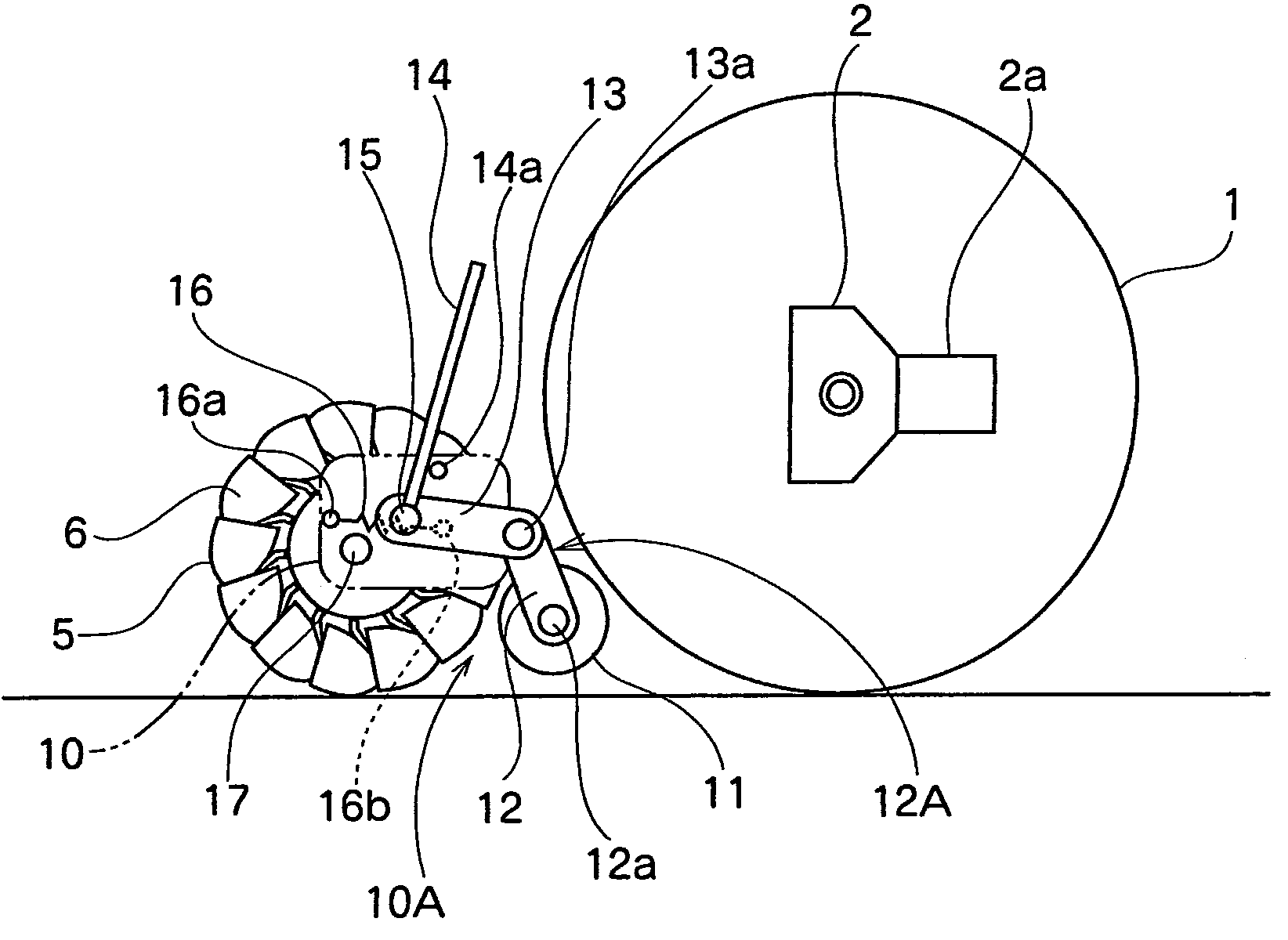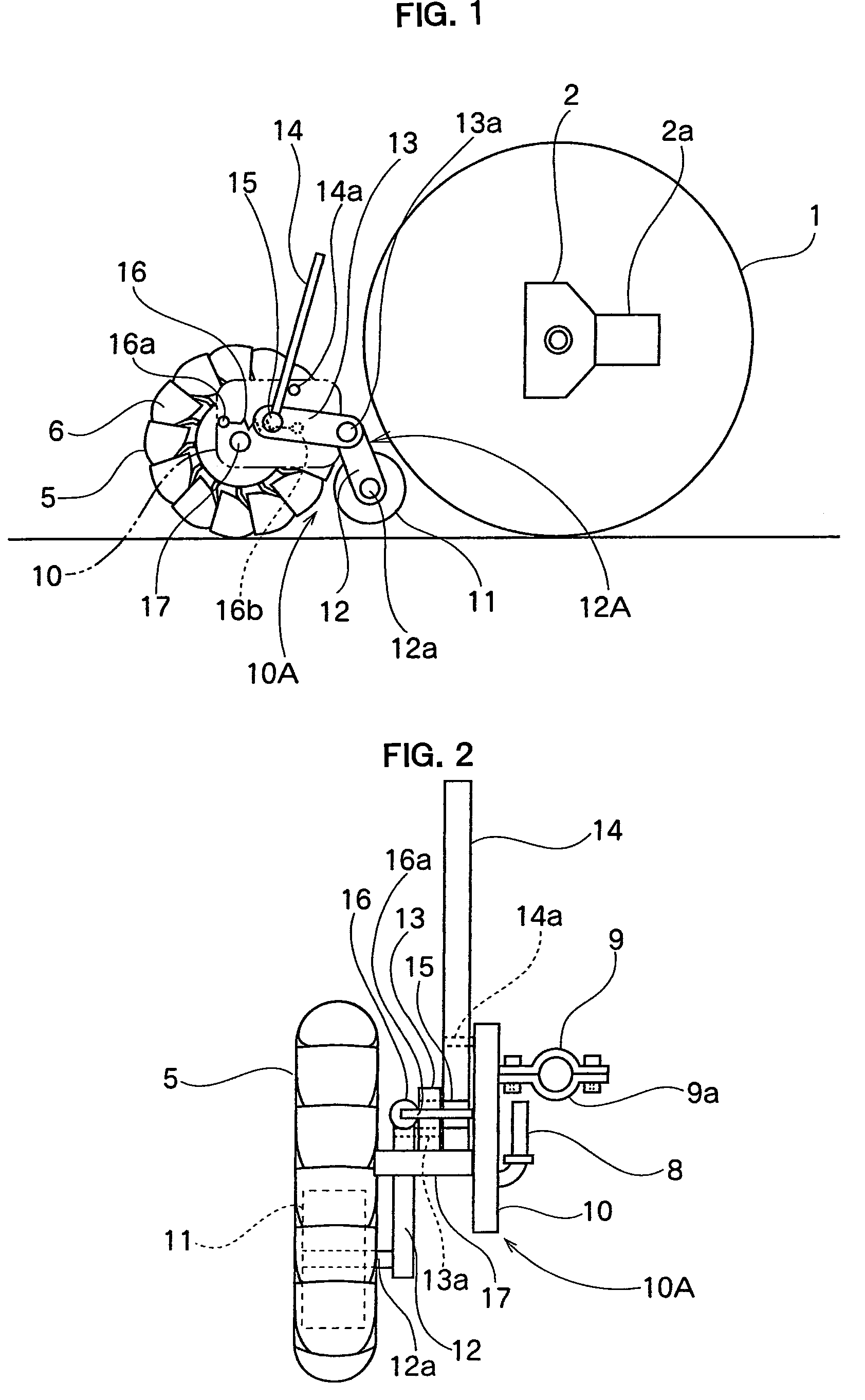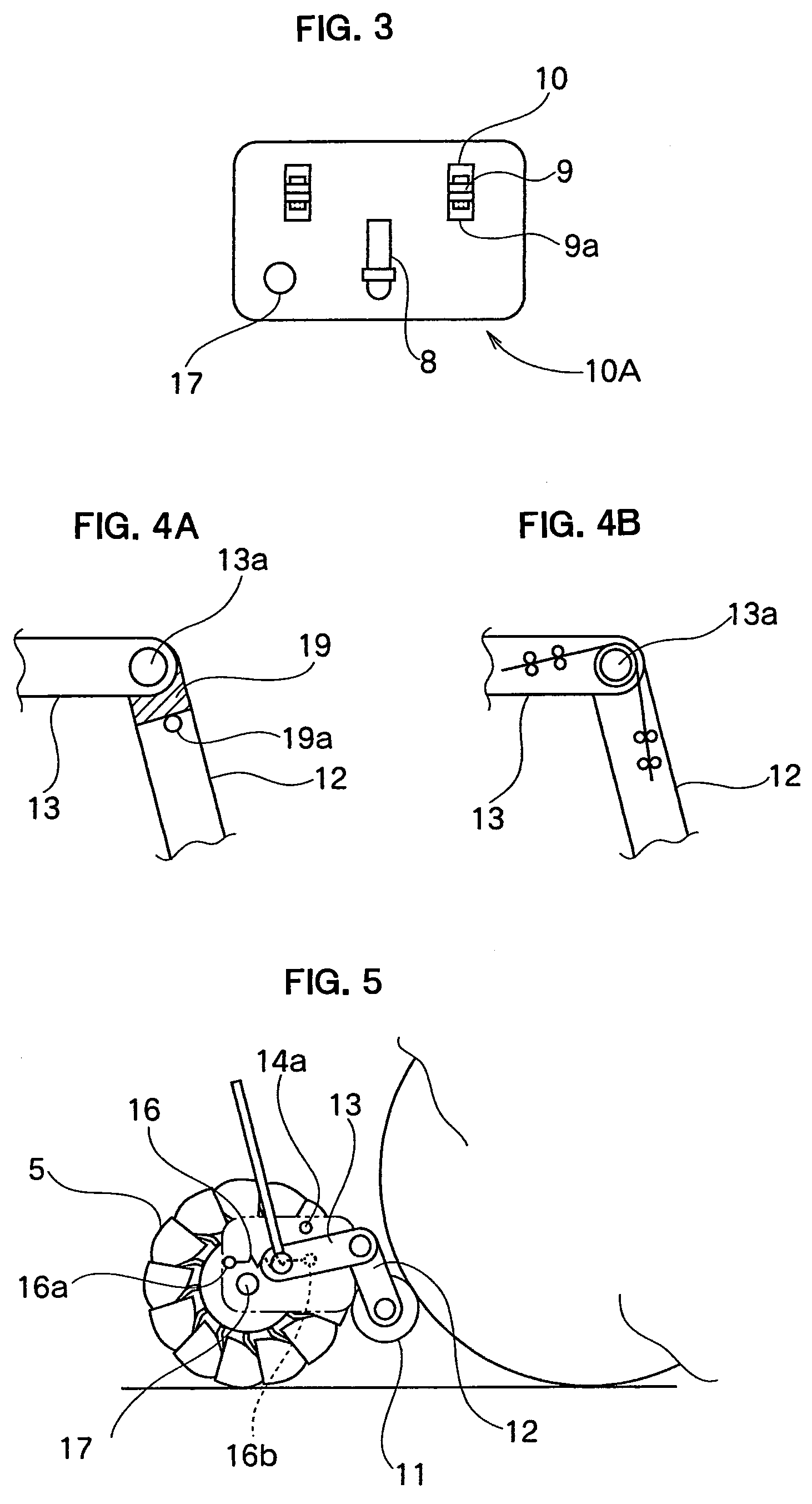Motorized wheelchair
a motorized wheelchair and wheelchair technology, applied in the direction of wheelchair/patient conveyance, electric propulsion mounting, gearing, etc., can solve the problems of degrading brake performance and steering ability, wasting power, and easily damaging the circumferential surface of the omni-directional wheel roller
- Summary
- Abstract
- Description
- Claims
- Application Information
AI Technical Summary
Benefits of technology
Problems solved by technology
Method used
Image
Examples
Embodiment Construction
[0024]A motorized wheelchair according to an embodiment of the present invention will be described with reference to FIGS. 1 to 6. As shown in FIG. 6, the motorized wheelchair has right and left rear wheels 1 each to be driven by a corresponding drive unit 2 using a motor 2a provided on a body frame 7, front wheels 5 of a nonturning type, namely, fixed in a direction orthogonal to a rotational direction thereof, having a plurality of rollers 6 rotatable in a direction orthogonal to an alignment direction of the wheels are disposed for direction change around the wheels, and the wheelchair is differentially steered due by supplying a difference in the rotational speed between the right and left drive units 2.
[0025]As shown in FIG. 2 and FIG. 3, the front wheels 5 are mounted on the right and left sides at positions with the treads of the front and rear wheels 1 and 5 being identical each other and a front wheel drive unit 10A having an axle 17 rotatably supporting the front wheels 5 ...
PUM
 Login to View More
Login to View More Abstract
Description
Claims
Application Information
 Login to View More
Login to View More - R&D
- Intellectual Property
- Life Sciences
- Materials
- Tech Scout
- Unparalleled Data Quality
- Higher Quality Content
- 60% Fewer Hallucinations
Browse by: Latest US Patents, China's latest patents, Technical Efficacy Thesaurus, Application Domain, Technology Topic, Popular Technical Reports.
© 2025 PatSnap. All rights reserved.Legal|Privacy policy|Modern Slavery Act Transparency Statement|Sitemap|About US| Contact US: help@patsnap.com



